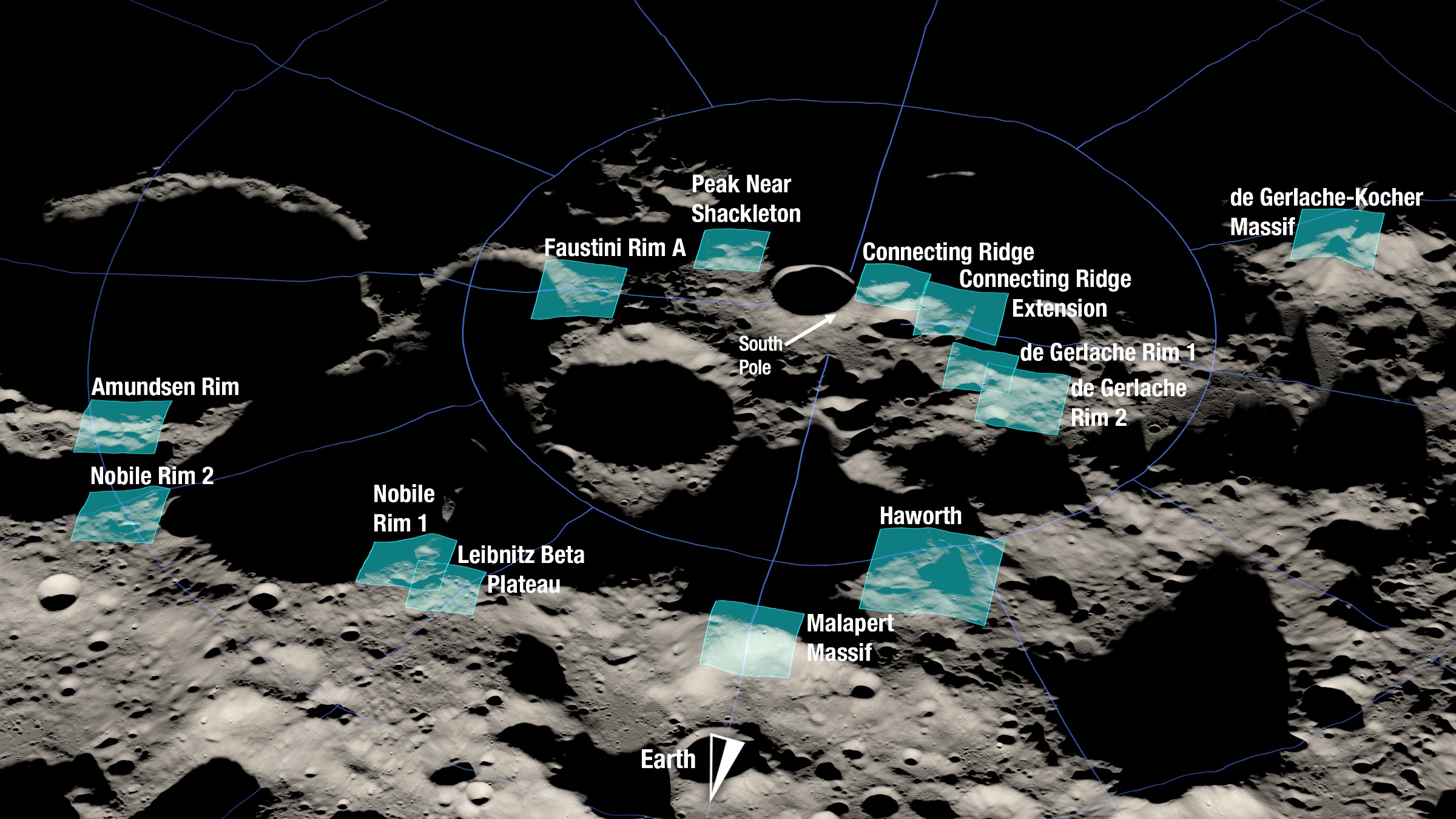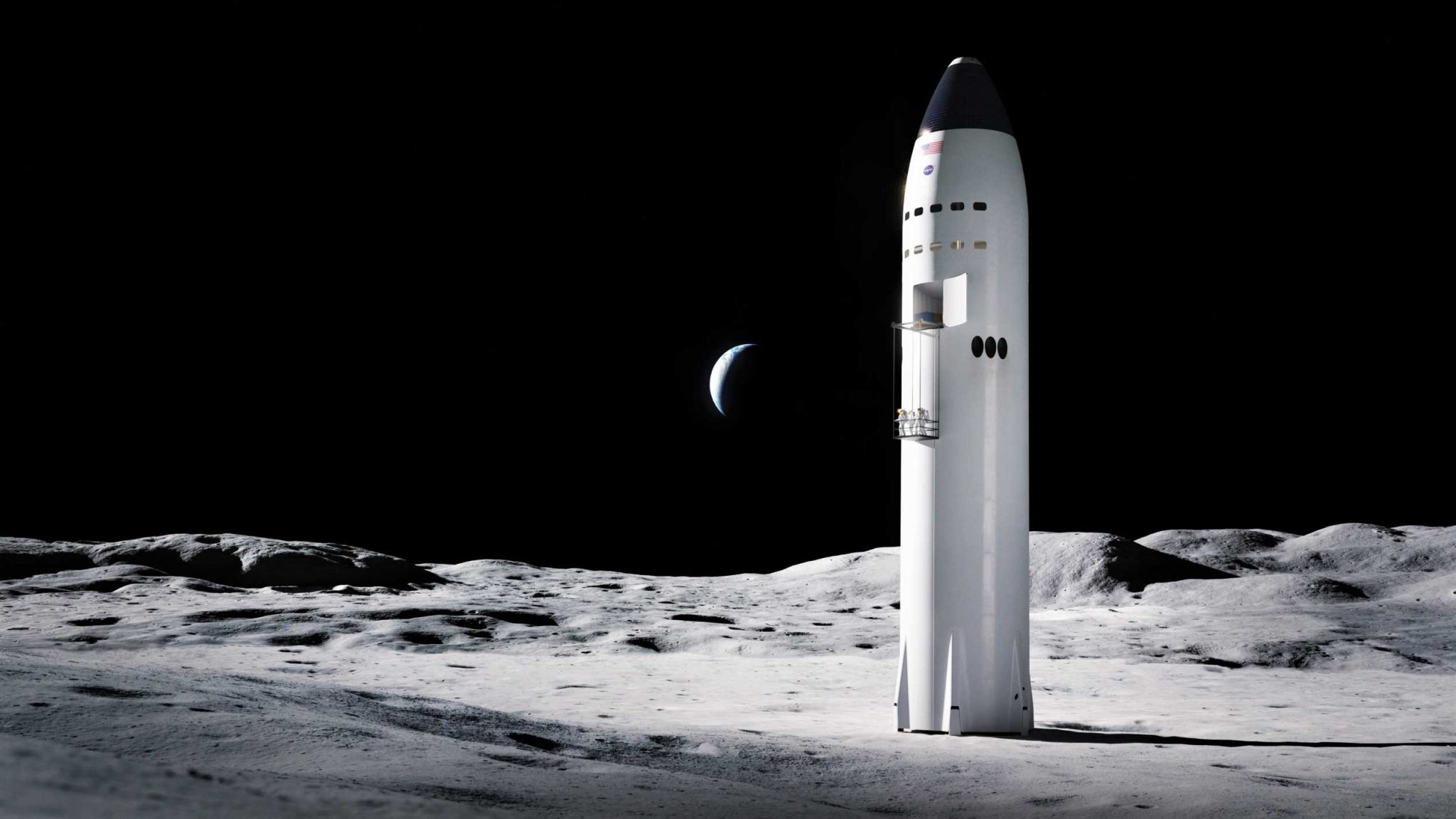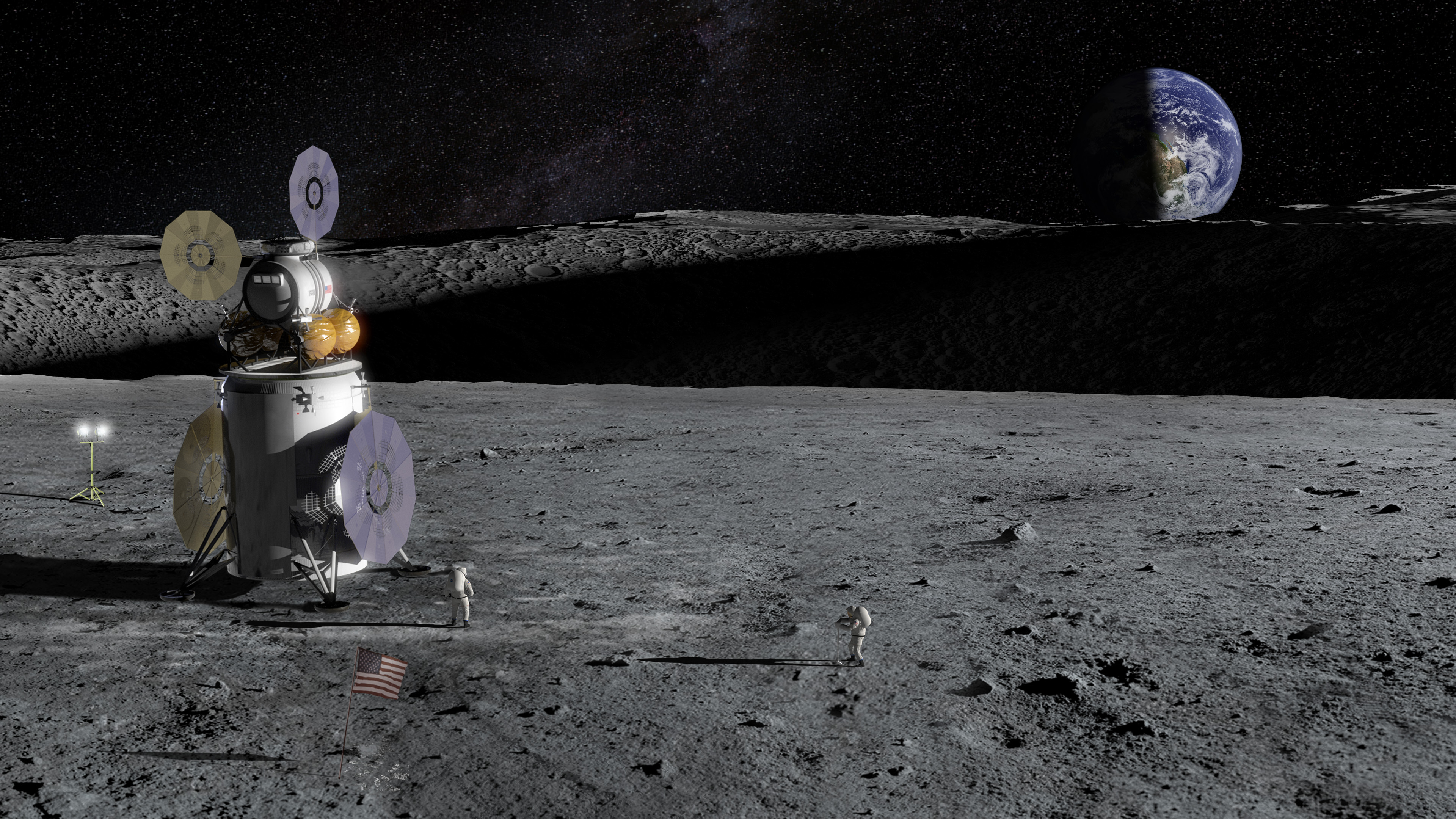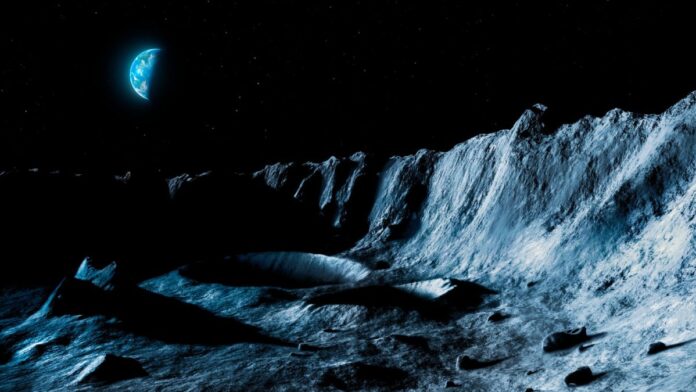We are on the cusp of learning far more about the projected icy situation of the moon’s permanently shadowed regions, or PSRs. Multiple nations are eying the moon’s south pole with research teams plotting out how and where to explore the bottoms of the sun-shy features.
In some circles, however, there are suggestions of placing a moratorium on up-close inspection of PSRs on the moon. While they might be chock full of extractable ice, it might be necessary to protect these features for the science they are likely to offer.
A PSR can serve as “paleo-cosmic tape recorder” and should be preserved at the lunar poles. Still ahead, however, more modeling work is needed to gauge the influence of warm spacecraft, rovers, even spacesuits, upon these environments. Doing so might ensure there’s no unintended fouling of such a fundamental record prior to the chance to study it.
Nevertheless, a number of new studies have identified areas of particular interest within the Artemis 3 candidate landing sites that might be hiding water ice that could be used by future human crews on the moon’s surface. But how realistic is it to expect to find enough ice on the moon to support human habitats? And what issues come with mining and using resources on the moon?
Related: NASA’s Artemis program: Everything you need to know
Cold traps
NASA’s Artemis 3 mission — America’s “rebooting of the moon” by human explorers — intends to land a human crew near the lunar south pole. The lunar south pole is located on the rim of Shackleton crater, a 13 mile (21 kilometer) diameter feature that was carved out billions of years ago by an asteroid impact. Shackleton is home of a permanently shadowed interior.
While the exact Artemis 3 landing site is still forthcoming, favorable touchdown spots are located near PSRs. There are also attractive places of lunar landscape that can offer long-duration access to sunlight and make possible direct-to-Earth communications.
The lunar south pole is bounded by summits with high illumination that can provide access to solar power in a region that also contains PSRs, areas that are “cold traps” believed to harbor volatile elements that can be turned into useful materials (opens in new tab), radiation shielding or even rocket fuel.
Unique locale
Considered a unique south pole locale is a “Connecting Ridge” between Shackleton and Henson craters. It may be an ideal target for future sampling tasks where a large number of features could be apprised over a short distance.
Detailed examination of the Connecting Ridge would provide geological context for the collection of any potential resources necessary to sustain a human habitat, should this site be targeted in the future for a permanent lunar surface outpost.
That’s the view of Sarah Boazman, based at the European Space Agency’s ESTEC in the Netherlands, lead author of a recent research paper diving into geologic targets near the lunar south pole.
“Investigations of the lunar south polar region should continue to assess the accessibility of features of interest, including isolated boulders, rock exposures, rocky craters, and PSRs, in preparation for upcoming missions to the area,” Boazman and colleagues explains. “Such investigations will provide crucial context for any future endeavors set to explore the south pole of the moon.”

Large and flat
A section of the Connecting Ridge is a little wider than a kilometer, said David Kring, principal scientist at the Universities Space Research Association’s Lunar and Planetary Institute in Houston, Texas. Areas exist on the ridge, he said, that are sufficiently large and flat to meet the requirements of NASA’s Artemis Human Landing System, the moon machinery that will take expeditions to the lunar surface.
“The ridge is typically a few hundred meters wide and peppered with small impact craters. Some of those crater walls are steep and will need to be avoided. Shadows may also make crater walls look steeper and the crater floors deeper than they really are,” Kring told Space.com.
While you might think the craters a nuisance, Kring added that they are important probes of the lunar surface. “The excavation process that produced the craters brought material from depth to the surface where astronauts can access the material,” he said.

All shapes and sizes
Pascal Lee is a planetary scientist at the SETI Institute and Mars Institute, based at NASA’s Ames Research Center, Moffett Field, California.
It is important to realize that PSRs come in all shapes and sizes on the moon, Lee says, from large areas that indeed can be called “regions,” to much smaller patches around the base of boulders, down to nooks and crannies between regolith grains. “I think we should use the more generic expression ‘permanently shadowed areas’ or ‘PSAs’ instead.”
It is also important to realize that there isn’t a one-to-one match between PSRs and water ice at the lunar poles, Lee adds.
“Some PSRs do not seem to have much hydrogen in them if any at all,” says Lee, “while there are occasionally sunlit regions that, surprisingly, still show hydrogen signatures within the top meter of the regolith,” the topside blanket of lunar dust, busted up rocks, and other materials.
International enterprise
In November of last year, a White House interagency working group within the National Science and Technology Council produced a cislunar technology strategy. In its pages, the strategy explains that new technologies are required to explore the moon’s polar regions “that may contain significant amounts of volatile compounds that are especially important for resource utilization.”
That strategy report also proposed an International Lunar Year (ILY).
“Science is an international enterprise, and scientists have long demonstrated the ability to work across boundaries for the common good,” the report explains. “A United States-led initiative to establish an International Lunar Year (ILY) can build upon the historical examples of past International Polar Years (IPY), the International Geophysical Year (IGY), and the International Space Year (ISY).
The ILY can also demonstrate how various activities can be carried out responsibly for the benefit and in the interests of all nations, including developing countries, the report says, “while enhancing transparency and building confidence and cooperation among moon-faring entities.”
Artemis base camp
Building upon the heritage of human treks to the moon between 1969 and 1972 via the Apollo program, NASA’s primary goal is developing sustainable lunar exploration.
But a Lunar Exploration Analysis Group (LEAG) assessment finds that details of any Artemis Base Camp are too sketchy.
LEAG was established in 2004 to support NASA in providing analysis of scientific, technical, commercial, and operational issues in support of lunar exploration objectives and of their implications for lunar architecture planning and prioritizing activities on the moon.
“Artemis will not be truly sustainable unless it includes a robust surface infrastructure and development strategy at a single location on the moon to catalyze and enable commercial and exploration activities. Progress to date on the Artemis 3 mission is encouraging, but details of the ‘sustained’ phase of the Artemis campaign are nebulous to the broader community,” says a 2022 LEAG document.
Accordingly, LEAG urged NASA to articulate plans to enable the construction of the Artemis Base Camp “and establishment of large-scale resource production by 2030, thereby supporting a permanent human presence on the lunar surface and growth of a vigorous cislunar economy.”

Property rights
Lunar mining is probably to be one of the first major tests of space property rights, says Erika Nesvold, author of the new book “Off-Earth — Ethical Questions and Quandaries for Living in Outer Space” (MIT Press, 2023).
“While outer space itself may be infinite, the valuable space resources within our reach are not, and it remains to be seen whether our system of international treaties and national laws will guide us towards cooperation, competition, or conflict over limited resources like ice on the moon,” Nesvold told Space.com.
“First come, first served” is certainly an appealing model for companies with the resources to get there first and national governments hoping to incentivize and stimulate their own private space mining industries, Nesvold adds.
“But ethically, it conflicts with the ideal set out in the Outer Space Treaty of 1967 that activities in space should be ‘carried out for the benefit and in the interests of all countries, irrespective of their degree of economic or scientific development,'” Nesvold points out.
So how best to curb potential conflict?
“The same way we have to tackle big, thorny problems like this here on Earth,” Nesvold responds, “with deliberate effort and forethought, consultation with all stakeholders, including countries not yet capable of lunar mining.” There’s need for serious consideration of the effects of decisions on future generations and on the lunar environment itself, “and a lot of hard work by space lawyers and diplomats.”
Water tower
Meanwhile, NASA’s Pascal Lee raises a cautionary flag vis-à-vis PSRs.
“I think it’s still premature to talk about water as a resource at the lunar poles,” Lee says. “Something becomes a ‘resource’ only if it’s economically cheaper and less risky to extract on site than to import from elsewhere.”
Lee points out that with the SpaceX Starship, the capability will exist to land 100-plus metric tons of clean, purified, ready-to-use water anywhere on the moon in one single flight.
“You’d effectively have a water tower on the moon, complete with a tap at the bottom, exactly where you want it. That will cost maybe 10 to a few 10s of millions of dollars,” says Lee.
So the real question: When will 100 metric tons of clean, processed, water extracted at the lunar poles and positioned where we want it, cost less than a few tens of millions of dollars?
“I’m optimistic about our lunar future,” Lee concludes, “but I honestly think it’s still going to be a very, very long time, if ever. The largest source of water available to the moon is the Earth.”

